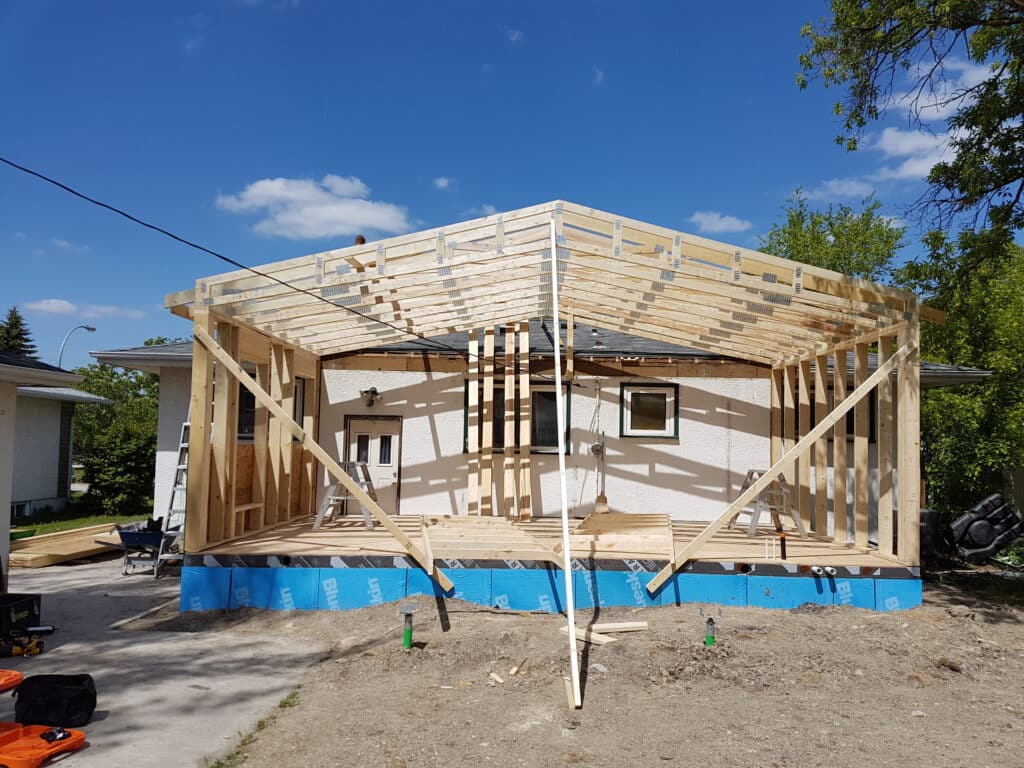Welcome to Winnipeg Building!
If you are one of the lucky people who gets to call Winnipeg home, this blog is for you. If you are even more lucky and planning an addition to your home, this article is for you! The most important part of your new addition is not the countertop, flooring selection or even size. The success of your addition will bear directly on the success of choosing the best foundation for your Winnipeg addition!

What Options Do I Have?
While the list of ways to detail a foundation are practically limitless, they generally boil down to two options. Deep foundations (piles or piers) and shallow foundations (footings or basements). Each one has a plethora of options to choose from. Should your foundation be a deep foundation on screw piles? Cast-in-place concrete piles? Should you choose a full basement, or a crawl space with an insulation skirt to prevent frost heaving?
When considering a foundation for your new addition it is crucial to have a qualified engineer review and recommend solutions for your project. Every project is different and needs a unique solution. However, we’d like the opportunity to share our experience and help equip you with the concepts to have meaningful conversation with your chosen engineer.
What are Deep Foundations?
Deep foundations are foundations that transfer the load of your addition or home down to clay and granular deep below the surface. This transfer of load is done via piles or piers. Concrete piers are friction based when the surface area of the concrete pile “grabs” the soil that it is drilled into. They are end-bearing when they hit refusal or when the bottom of the pile is belled so that the bottom bears the weight.
Concrete piers can be cast in place (when you drill a hole and fill with concrete) or driven (when you pound pre-built concrete piers into the ground). You can also use galvanized steel screw piles to transfer the load. They are large steel columns with a helix on the bottom to screw into the ground like a giant construction screw.
Typically, in Winnipeg the deep foundation of choice for a residential addition is cast-in-place concrete piles or screw piles . They are the most economical and easiest to schedule, with the least interruption to the neighbourhood and yard site (and screw piles win on the least intrusive scale hands down!).
In Winnipeg Screw piles require an Engineer to sign off on the torque required to ensure proper load bearing capacity. Screw piles are galvanized to prevent rusting.
What are Shallow Foundations?
Shallow foundations are the most common for older homes in Winnipeg. These would be slab on grade (like a detached garage, where the concrete slab rests directly on grade), or basements and crawl spaces on footings. You can have concrete or wood foundations in this category, though concrete is more common. Depending on the depth of your shallow foundation you may be required to install an insulation skirt around the foundation to prevent frost ingress.
What Foundation is Your Existing Home On?
You may find yourself asking “Why does this matter? Should I not demand piles for the foundation on the new addition?” But the joys of building in Winnipeg means that we have clay that can expand or contract 1″ for every foot of clay that goes from dry to wet or vice versa. Most areas are sitting on about 30-40′ of clay, so that means that the ground under and around your home and new addition can shift between 30 and 40″! You can combat that movement with proper drainage, sloping the grade away from your home, and a well-built foundation.
When choosing a foundation your primary goal should be to ensure the health of the whole home, including the new addition. What you want to do is minimize the differential movement between the home and the addition. .
What Foundation is Best for my Winnipeg Addition?
In general the best foundation for your Winnipeg addition is a foundation that is as similar as possible to the foundation of your existing home. There are exceptions, so make sure that you have a qualified engineer involved!
Exceptions would include areas near riverbanks and areas where bank stability is an issue. In these areas it may be wise to pile both the original house and addition.
Other exceptions would include foundations that are already suspect, where you would rather ensure your addition is solid and doesn’t move and leave the existing home to move. In this case we recommend slip joints be incorporated so that the addition and house can move differentially.
